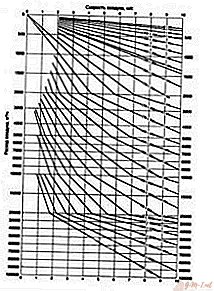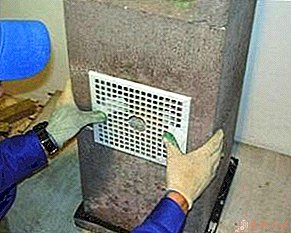What requirements should ventilation pipes meet?
 The problem of providing ventilation and creating a healthy microclimate is especially acute in the construction of a country house or cottage. Manufacturers today offer a large selection of a variety of pipes used in the installation of the ventilation system. In order not to make a mistake in the choice, you need to consider what functional properties are important for them.
The problem of providing ventilation and creating a healthy microclimate is especially acute in the construction of a country house or cottage. Manufacturers today offer a large selection of a variety of pipes used in the installation of the ventilation system. In order not to make a mistake in the choice, you need to consider what functional properties are important for them.
Good ventilation ducts are appreciated for:
- maximum tightness;
- creation of the minimum noise when using;
- sufficient spaciousness at which there is no stagnation of air masses;
- thermal insulation of materials that do not affect the temperature in the premises;
- ability to combine with the interior.
Let us consider in more detail their features and properties.
Characteristics of pipes for ventilation systems by their cross-section
Externally, the difference in products is immediately immediately noticeable, related to their order; they have a round or rectangular section. Ventilation, providing air inlet or outlet, regardless of its draft allows both pipe configurations. The specific choice depends on the parameters of the room:
- For small rooms with low ceilings, a rectangular section is preferable.
- Large residential and industrial premises with high ceilings are more suitable for round section.
Important! If a rectangular ventilation pipe is mounted in a residential building, it must be additionally insulated. This will reduce the noise created by the collision of air mass and obstacles in the form of angles.
Round pipes
- The size: industry produces products of different diameters. Diameters of 100 mm - 500 mm are small, while large products are considered to be 500 mm - 2000 mm.
- Direct Connection Length: 2.5 - 6 m.
Rectangular tubes
- The size: from a minimum of 100 mm x 150 mm to a maximum of 1600 mm x 2000 mm.
- Straight Length: maximum - 2.5 m.
Reference! The connection (like wiring or rotation) of rectangular and round ducts is formed by special elements that exactly match the specific size of the section.
In addition to the configuration, the properties of the products depend on the material (plastic or metal) that is used in their manufacture.
Plastic ventilation pipes
Varieties of plastic pipes
Plastic ducts are becoming more popular. The material used, the presence of not only rigid, but also bending products allows you to design the necessary configurations, provides noise reduction, without any problems combined with the features of the interior.
In their manufacture, a variety of polymers are used.
Plastic pipes and their characteristics
Plastics, PVC
Products made of plastic or polyvinyl chloride (PVC) differ from others in the lowest price, which is combined with absolute tightness, low noise, environmental friendliness and safety for people. The cross section and shape of the products is diverse, but installation is possible only under conditions that do not allow the material to heat above 160 °.
Polyethylene
The peculiarity of polyethylene ventilation pipes is antistatic properties, protection against ultraviolet radiation, black color, as well as high strength. They can be used under various temperature conditions. The pipes will safely withstand frosts down to -40 ° and high temperatures up to + 80 °.
Polypropylene
The advantage of polypropylene products is their wear resistance. They work well with high humidity, easily tolerate an aggressive environment, do not lend themselves to burning. At the same time, they cannot be used at low temperatures, because polypropylene becomes brittle due to frost, and easily breaks.
Polyurethane
Polyurethane ducts are very ductile. They provide quiet ventilation, tolerate heating up to 280 ° without the release of substances harmful to health, but cost more than other materials.
Ftoroplast
The special polymer material fluoroplastic is characterized by super strength. Therefore, pipes from it can be installed in rooms with different temperature conditions (from -40 ° to + 140 °), an aggressive environment with alkali or acid fumes will also not damage the fluoroplast.
Metal ventilation pipes
 Metal is a traditional material used for ductwork before the appearance of plastics. And currently, metal products for ventilation have not lost their attractiveness. They are distinguished by durability and reliability, good aerodynamics, sanitary safety.
Metal is a traditional material used for ductwork before the appearance of plastics. And currently, metal products for ventilation have not lost their attractiveness. They are distinguished by durability and reliability, good aerodynamics, sanitary safety.
Varieties of metal pipes
In the production of ventilation ducts, different types of steel sheet are used (galvanized, stainless, black steel), as well as aluminum. Various materials give the product functional features.
Characterization of metal pipes
Galvanized steel
The thickness of the galvanized ducts is from 0.5 mm to 1.2 mm. Temperature conditions - from -40 ° to + 80 °. Thanks to the zinc layer, the products do not corrode, therefore they are used in places of high humidity. Not recommended in aggressive environments.
Stainless steel
Thickness: 1 to 5 mm. Temperature conditions - from -40 ° to + 500 °. Resistance to various temperatures makes it possible to use stainless steel products in industrial production, for ventilation of any premises, including aggressive environments.
Black steel
Thickness: 1.2 - 1.5 mm. Temperature conditions - from -40 ° to + 800 °. Products made of black steel are not particularly flexible, but have extra strength. They are not afraid of high temperatures, metal makes products fireproof.
Aluminum
For ducts, aluminum foil with a thickness of 0.55 mm is usually used. The temperature regime is from -40 ° to + 130 °.
Aluminum ducts are particularly flexible and lightweight. Antistaticity, anticorrosion, durability and tightness are inherent in them. A limitation of use is less resistance to high temperatures.
Straight-seam and spiral pipe for ventilation, their originality
 According to the production method, 2 types of metal ventilation products are distinguished.
According to the production method, 2 types of metal ventilation products are distinguished.
Straight-seam
Longitudinal air ducts are made of steel sheets. Billet of the required size, cut from a metal sheet. Then, on special machines, the sheet is folded, giving it the shape of a pipe, and then joined by a weld or a seam lock to ensure tightness.
Spiraling
For spiral filing products, not a sheet metal, but a metal tape is used. The machine curls it with a spiral, creating a durable duct.
Both production methods allow the production of reliable ventilation pipes having similar technical parameters.
Important! The production of spiral tubes is less costly since it does not require additional procedures for fastening the metal sheet. Therefore, such products are cheaper.
Insulated ventilation pipes
To increase the wear resistance, ventilation ducts with a diameter of 102 mm to 506 mm are subjected to additional insulation. It is made of a special protective coating that has several layers: plastic, special insulation - mineral wool, polyester, metallized aluminum foil.
Insulation increases thickness up to 2.5 mm. Insulation protects the head of the insulated duct in winter, giving additional sound insulation.
Textile ventilation pipes
 Supply ventilation provides the necessary intake and distribution of air into the room. For even distribution of air flows, textile ducts, which have appeared recently, are used. Special technical textiles make them light and comfortable in everyday life.
Supply ventilation provides the necessary intake and distribution of air into the room. For even distribution of air flows, textile ducts, which have appeared recently, are used. Special technical textiles make them light and comfortable in everyday life.
They are easy to install or clean. They have antibacterial properties, are durable, resistant to moisture or chemical vapors, they are good at temperatures from -40 ° to + 280 °. An additional advantage for residential premises is their decorativeness, a variety of colors.
How to calculate the required diameter of the ventilation pipes
When choosing an air duct for ventilation, it is necessary to consider how much air should move through it. This will help to calculate the required diameter, allowing the air to move freely without forming stagnation.
To independently calculate the diameter of the duct, you need to know the volume of air flow allowed.
Calculation algorithm
 We determine the volume of the room - Vto - the area of the room, multiplied by its height.
We determine the volume of the room - Vto - the area of the room, multiplied by its height.- Determine how much air should move in 1 hour - n. To do this, we turn to special SNIPs, from which we learn:
- living quarters: 3 m³ per 1 m²;
- kitchens: from 60 to 90 (with a gas stove with 4 rings) m³ per hour;
- bathroom, toilet - 25 m³, combined bathroom - 50 m³ per hour.
- We find the rate of air exchange O = n x Vto.
- We determine the diameter using a special diagram.
Important! To calculate the diameter, you can refer to special programs that facilitate calculations.
Features of the installation of ventilation pipes
You can mount the ducts yourself, this does not require special training.
Duct Installation Tips
 Do not immediately mount the duct. Pre-assemble it in the room, creating the desired configuration and determining the most suitable place for fastening.
Do not immediately mount the duct. Pre-assemble it in the room, creating the desired configuration and determining the most suitable place for fastening.- The use of flexible products requires more than just pre-assembly of the product. The flexible duct must be specially stretched. This will help prevent bending of excess length.
- Remove the excess by making final calculations based on the chosen mounting location.
- For reliable sealing, seal all joints of joints before sealing them.
- Use brackets for fastening.
Important! When working with galvanized pipes, prepare in advance additional parts for fastening (angles, studs, nuts, bolts, etc.).

 We determine the volume of the room - Vto - the area of the room, multiplied by its height.
We determine the volume of the room - Vto - the area of the room, multiplied by its height. Do not immediately mount the duct. Pre-assemble it in the room, creating the desired configuration and determining the most suitable place for fastening.
Do not immediately mount the duct. Pre-assemble it in the room, creating the desired configuration and determining the most suitable place for fastening.
Leave Your Comment